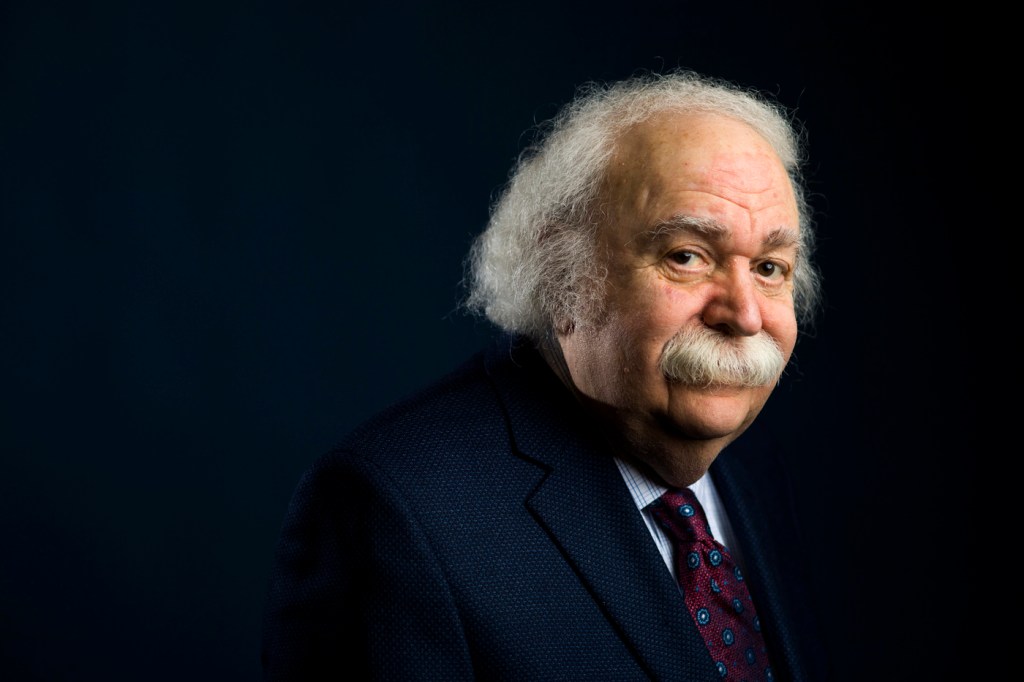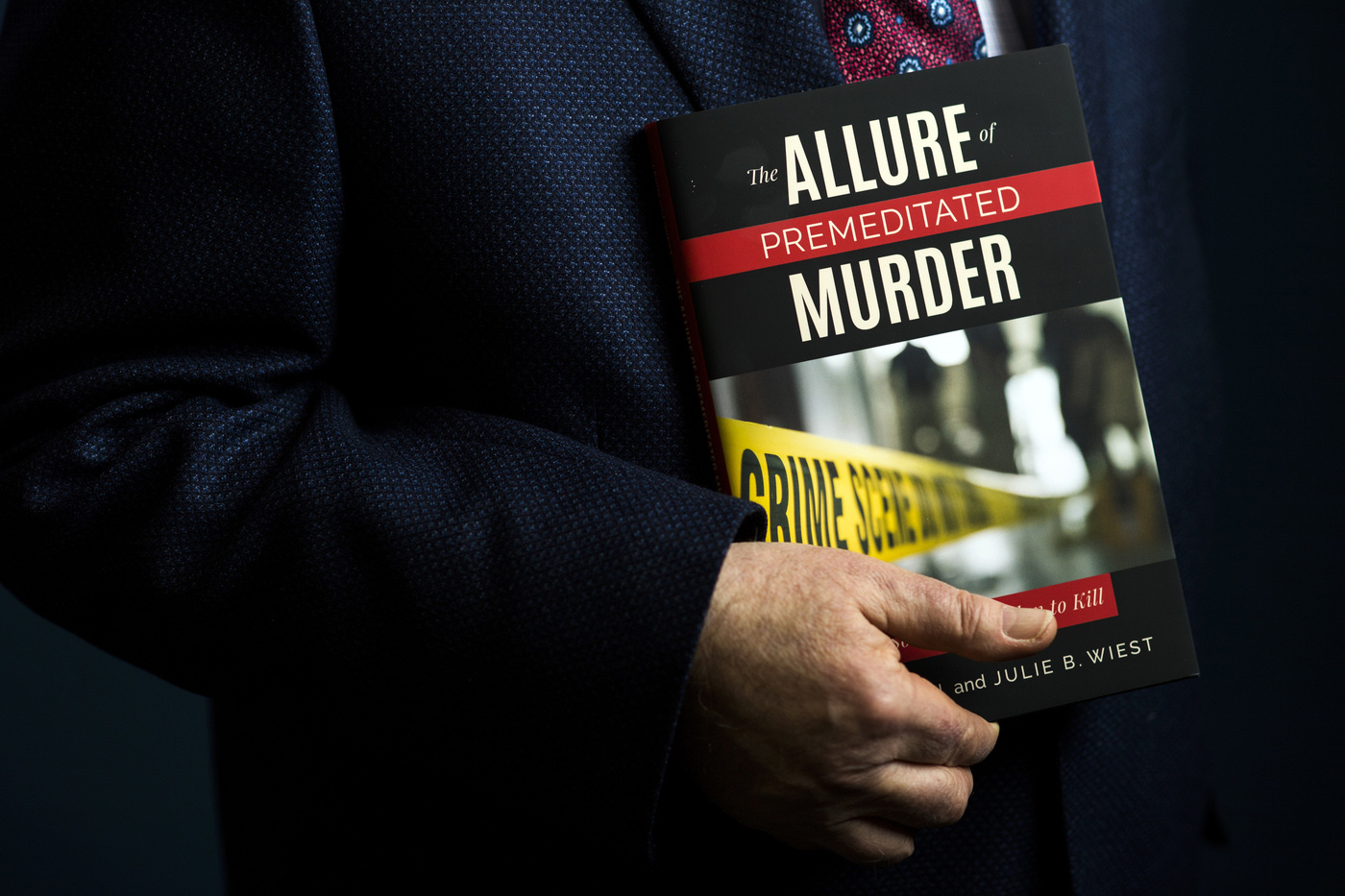Northeastern professor studies how Charles Manson, Ken Bianchi, and Kenneth Seguin became notorious killers

Northeastern professor emeritus Jack Levin has spent his career studying murder and violence. In the early 1980s, he was among the first to conduct a comprehensive study about serial killers. With numerous television appearances and nearly three dozen books to his name, Levin is so widely known in the field that Charles Manson had a nickname for him: “Jack the Jackal.”
Levin’s latest book, with co-author Julie Wiest, The Allure of Premeditated Murder, examines the motivations of killers who plan their attacks. Drawing on his extensive research and interviews with convicted murderers over the years, including Manson, the sociologist helps us understand what sets apart serial killers and mass murderers from other violent perpetrators.
They’re clever, but amoral
What mass murderers lack in morality, they make up for in smarts, specifically street smarts. Most murders, according to Levin, are solved within 48 hours. That is, unless authorities are working with a criminal who is crafty and shrewd.
“They have certain skills which allow them to get away with murder for a long time,” Levin said. They lack a conscience, but are well versed in the art of manipulation. In many cases, the perpetrators are eventually caught, said Levin, but unfortunately not before they’ve amassed a significant number of victims.
The payoff is in the planning
Levin said that mass killers derive more satisfaction from planning an attack than executing it, similar to how we get enjoyment from planning a vacation, say, or a wedding.
“People say, ‘Well it took three minutes to kill all the victims and then the killer committed suicide; what kind of advantage or benefit is that?’ Well, it isn’t what happened at the crime scene,” Levin said. “The payoff is in the planning. It’s in the six months, the year, the two years when the killer was putting one over on everybody when he was living a secret life.”
A sustained process lends a certain rationality to their evil, he said, and gives the perpetrator the sense, however misguided, that he can get away with the act.
They will find your weakness and prey on it
Levin shares the story of the time he visited Ken Bianchi at Washington State Penitentiary in Walla Walla, Washington, where he’s serving a life sentence for raping and murdering a dozen women on the West Coast in the late 1970s, in what became known as the Hillside Strangler murders.

Photo by Adam Glanzman/Northeastern University
It was the first time Levin had interviewed a serial killer. Upon greeting him, Levin said Bianchi grabbed his hand and shook it so firmly that he spent the next four hours of his interview seething and plotting how to get even with the inmate.
“He was sending a message to me: Look buddy, you may have your PhD, but as long as you’re behind bars with me, I’m in control; I’m in charge here, don’t forget it,” Levin said.
Four hours later, when the two shook hands goodbye, Levin said he thanked Bianchi and squeezed his hand as hard as he could. His response? “He laughed,” said Levin. “He made a fool of me and he knew exactly how to respond and that taught me a lesson about serial killers. They really understand the way other people think.”
They seek revenge
Just about every mass murderer has held a grudge against somebody, whether that be a spouse, a classmate, a certain gender, or society in general. They may not even admit it to themselves, said Levin, but revenge is usually a driving force behind their actions.
Take Kenneth Seguin, of Holliston, Massachusetts. In 1992, Seguin, a soccer coach and seemingly respectable member of society who had lost his job and consequently fallen on hard times, killed his wife and young children in their home. His defense attorneys later argued that he did it to protect his family and that he believed they would reunite in heaven, but when Levin pressed him for the real reason, he said Seguin admitted to him that he may have acted in anger. “He may have blamed his wife for his misfortune and decided to get even with her,” Levin said.
Most murders are committed by men
Levin said that men are more likely to plan murders while women are more likely to be spontaneous. “Even when women are serial killers, they team up with men,” he said. “They almost never operate on their own.”
Of course, there are exceptions to that rule; a woman opened fire at the YouTube headquarters in California last April, wounding three people before killing herself.
Mass murderers versus serial killers
People who commit premeditated murder do not share one personality type, but it is clear that each killer suffers from a personality disorder or a mental illness, Levin said. Mass murderers tend to be chronically depressed and socially isolated, feeling like they have no place to turn to when they get into trouble. They externalize responsibility, blaming everybody but themselves. Research suggests that in many cases, those who plan a violent attack have suffered some catastrophic loss, such as being fired or enduring a painful separation from a close friend or family member.
Serial killers, on the other hand, don’t need a motive to commit murder, said Levin. They’re sociopaths, he said, meaning they lack a conscience, don’t know or care about the difference between right and wrong, and tend to be shrewd in the way they deal with others. “They have a fantasy life that they develop early and with every murder they attempt to perfect it,” he said. “They’re unable to do so, so they kill again hoping that this time they will commit the perfect crime, and it never happens.”
For media inquiries, please contact media@northeastern.edu.





